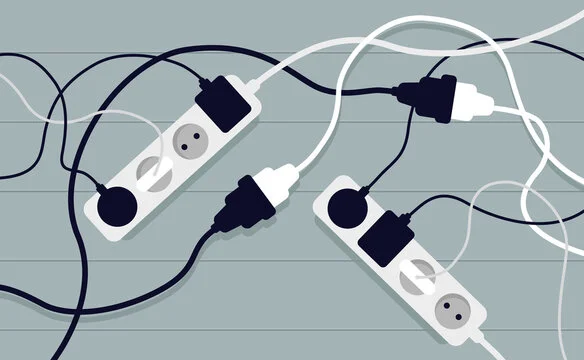Extension cords are some of the most neglected electrical devices. The majority of homeowners and offices don’t give these devices any thought until it’s time to plug a gadget without the walled socket. However, this rush to pick during times of urgent need means choosing the wrong extension cord more often than not.
This could result in several negative consequences, like damaged appliances and electrical hazards like fire or electrocution. So, do you guarantee that you’re picking the right extension cord for every occasion? No need to overthink this question; this article provides all the answers you need.
Let’s start with the types of extension cords.
Types of Extension Cords
Generally speaking, there are about five types of extension cords. Knowing each type and the task it can perform is the first step.
- Heavy-duty Extension Cords – These types of extension cords usually have contractor-grade cables with conductors of 12 AWG and above. They also feature thick sheathing and insulation. Heavy-duty extension cords are best suited for commercial use over long distances when using higher-wattage or higher-ampere equipment.
- Medium-duty – They are the extension cords you may consider the jack of all trades. They are multipurpose in their function and can easily power devices like Hoover cleaners, microwaves, laptops, and vacuum cleaners. The best ones are high-amp 220 extension cords that are much safer than most regular extension cords.
- Light-duty – These comprise the everyday extension cords commonly used in most homes and offices. They are capable of powering your portable fans, interior lighting, and other low-wattage or low-amperage gadgets.
- Outdoor – They usually have a heavier outer coating and a three-prong plug. You will notice the words “weather resistant” or “weather” in their labeling, typically denoted by the letter “W.”
- Indoor – This comprises most extension cords used indoors, as the name suggests. They normally have shorter cords than their outdoor counterparts for easy cable management.
With these five categories, let’s look at the crucial factors you should consider to ensure you get the perfect extension cords you need.
Factors to Consider When Choosing The Right Extension Cord
1. Power Capacity
It’s crucial to remember the power of an extension cord before using it. This determines the amount of current it can carry. The lowest current capacity of any given extension cord is 5 amps.
As a general rule of thumb, you should purchase an extension cord with a higher power or amperage capacity than your device requires. You can determine the maximum amperage your extension cord needs to supply by adding the power needed by the various devices you will plug into it.
2. Plug Configuration
You can purchase extension cords with one or more sockets at different cord ends and designs like T-shape, block, sliding compression lock, W-shape, etc. The 2- or 3-prong plugs work for most devices. Therefore, you can effectively power your gadgets if you get any one of these options.
However, you need to ensure that your extension cord is plugged into a grounded 3-hole outlet when using a 3-prong plug. The grounded outlet and the extra prong help safeguard your devices from electrical shocks and fires.
The National Electrical Manufacturers Association (NEMA) has a complete guideline to help consumers choose the right plug for the amps and voltages of their devices. So you can refer to a NEMA Plug Configuration Chart for the right plug type.
3. Gauge
The gauge of the extension simply refers to the thickness of its cords. This thickness determines the current that it can safely convey. A higher gauge wire can convey more power across a longer distance without a significant loss of voltage than a lower gauge wire.
It operates based on the law of electrical resistance. If you’re using an appliance with a motor, using the correct gauge is vital because using a low-voltage extension cord to power a motor device may result in permanent damage.
Fortunately, you don’t have to guess; most extension cords have their gauge indicated on the product box or outer insulation. For example, the jacket for a 20-gauge cord will have 16AWG labeling.
4. Size
This is similar to the gauge measured by AWG, which stands for American Wire Gauge. The standard sizes of extension cords on the market are 10-gauge, 12-gauge, 14-gauge, and 16-gauge.
Since connecting an extension cord to another extension is dangerous, you need to ensure you purchase one with the correct number of power outlets to support your devices. Also, going for the right cord length should help prevent this issue. Let’s take a closer look at the next point.
5. Cord Length
The primary purpose of the extension cord is to bring power where there are no fixed sockets. Therefore, your extension cord needs to be the right length. Otherwise, it’s of no use.
As previously stated, you can’t and shouldn’t plug an extension cord into another one. Therefore, you must check the gauge and cord length to ensure you have the right power over the proper distance.
Final Words
Picking the perfect extension cord is vital for safety, practicality, and effective energy conservation. When deciding on the best extension cord for a particular situation, you must consider factors like size, cord length, power capacity, and gauge.
Then, you also need to know the conditions under which it’s safe to use to ensure an adequate and secure power supply for your devices.









